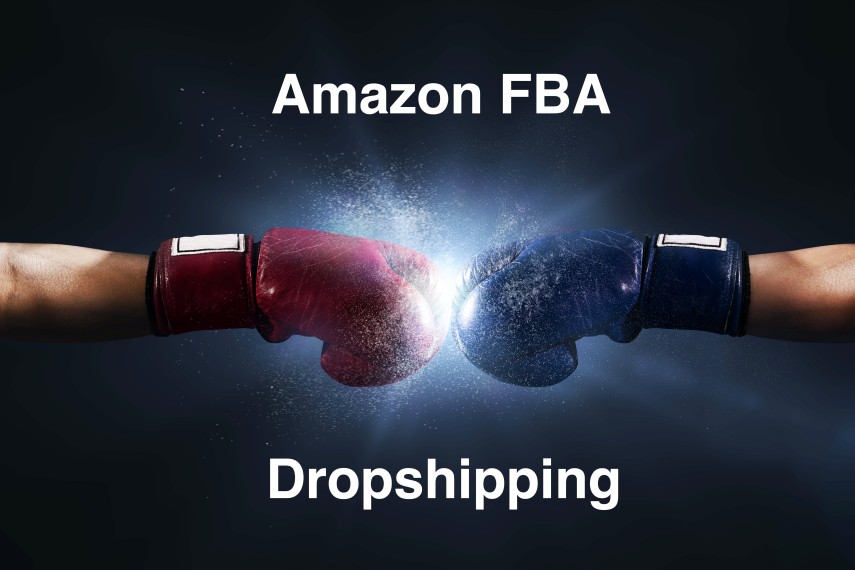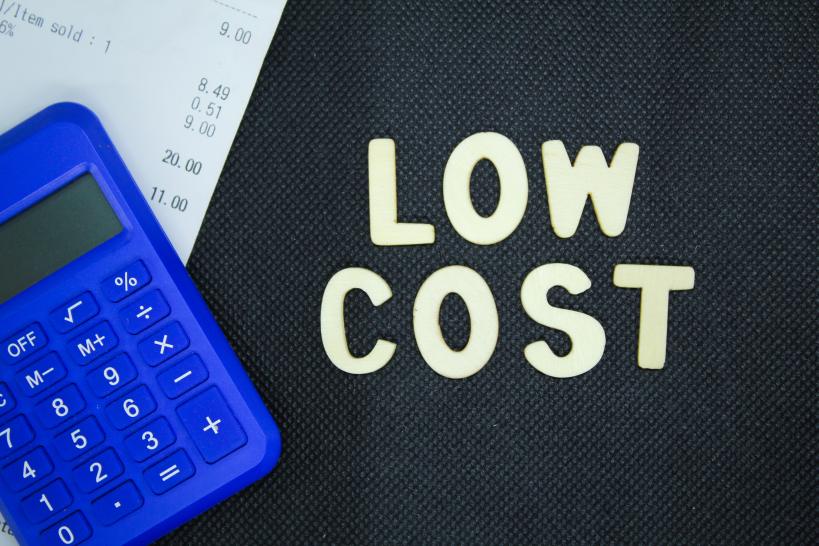In today’s digital world, selling products online has become one of the most popular ways to earn money. Two of the most popular online business models are Amazon FBA and dropshipping.
Amazon FBA (Fulfillment by Amazon) is a program that allows sellers to store their products in Amazon’s warehouse, where the company handles the shipping, handling, and customer service.
On the other hand, the dropshipping model is a retail fulfillment method where a store doesn’t keep the products it sells in stock. Instead, when a store sells a product, it purchases the item from a third party and has it shipped directly to the customer.
Both models have their own set of benefits and drawbacks. In this article, we’ll compare the two models, so you can decide which one is right for you.
What is Amazon FBA?
Amazon FBA is an e-commerce service offered by Amazon that allows third-party sellers to store their products in Amazon’s fulfillment centers. When a customer orders a product, Amazon picks, packs, and ships it on behalf of the seller.
Amazon FBA sellers benefit from Amazon’s vast shipping network, customer support, and fast delivery times.
Amazon FBA has been around since 2006 and has become one of the most popular ecommerce business models. It’s a great way for sellers to reach a large audience and increase their sales without worrying about logistics or customer service.
Some sellers have reported that their sales have increased by up to 30% since they started selling online using Amazon FBA.
Benefits of Doing Amazon FBA?
You may wonder: is Amazon FBA worth it? Let’s dive into the benefits of Amazon FBA.
Prime Eligibility
Amazon Prime is one of the most popular subscription services in the world, and it’s easy to see why. Prime members enjoy free two-day shipping, exclusive deals, and other benefits that make online shopping more convenient.
When you use Amazon FBA, your products will be eligible for Prime, which can significantly increase your sales. Prime members are more likely to buy products that are eligible for Prime, and they’re also more likely to leave positive reviews.
This can lead to increased visibility and more sales over time. Plus, since Amazon handles the shipping and handling, you don’t have to worry about meeting the strict delivery requirements of Prime.
More Time to Focus on Your Business
Running an online business can be a lot of work, especially regarding logistics. With Amazon FBA, you don’t have to worry about storing, picking, packing, and shipping your products. This frees up a lot of time, which you can use to focus on other aspects of your business.
For example, you can spend more time developing new products, improving your marketing strategy, or providing excellent customer service. By using Amazon FBA, you can grow your business faster and more efficiently.
Access to Amazon’s Customer Service
When you use Amazon FBA, you have access to Amazon’s world-class customer service team. If a customer has a problem with their order, Amazon will handle the customer service inquiries and refunds on your behalf. This can save you a lot of time and hassle and help you maintain a positive reputation on Amazon.
If you’re a small seller, providing the same level of customer service as a big corporation like Amazon can be challenging. By using Amazon FBA, you can use their resources and expertise to provide excellent customer service to your buyers.
Struggling to decide between Amazon FBA and dropshipping for your business?
Contact Growth Hackers
Lower Shipping Costs
One of the most significant expenses for online sellers is shipping. When you use Amazon FBA, you can use their vast shipping network to reduce your shipping costs. Since Amazon ships millions of products daily, they can negotiate better rates with carriers like UPS and FedEx.
Additionally, you can use Amazon’s fulfillment centers to take advantage of their discounted shipping rates. This can help you save money and increase your profit margin and margins.
Multi-Channel Fulfillment
Another benefit of using Amazon FBA is that you can fulfill orders from other channels, such as your website or other marketplaces. Amazon’s Multi-Channel Fulfillment service allows you to use its shipping and handling infrastructure to fulfill orders from other sales channels.
This can save you time and money and help you provide a consistent level of service across all of your sales channels.
Inventory Management
Finally, Amazon FBA can help you manage your inventory more efficiently. When you use Amazon FBA, you can track your inventory levels in real time, which can help you avoid stockouts and lost sales.
Additionally, Amazon marketplace can handle the storage and management of your inventory, which can help you avoid the costs and headaches associated with storing your products in your warehouse. Using Amazon FBA, you can optimize your inventory levels and reduce the risk of running out of stock.
Challenges of Amazon FBA
Amazon’s FBA (Fulfillment by Amazon) program is popular with many online sellers. However, like any other business model, it has its fair share of challenges. In this article, we’ll discuss some of the most common challenges of Amazon FBA.
Increased Competition
One of the biggest challenges of Amazon FBA is increased competition. With the popularity of online marketplaces, the number of sellers on Amazon has also increased significantly. This makes it harder for sellers to stand out and attract customers.
To overcome this challenge, sellers must focus on providing exceptional customer service, using quality product images and descriptions, and pricing their products competitively.
Product Storage Fees
Another challenge of Amazon FBA is the product storage fees. These fees are charged to sellers for storing their inventory in Amazon’s warehouses. The fees can add up quickly, especially for sellers with slow-moving products or those with large inventory.
To minimize the impact of storage fees, sellers should regularly monitor their inventory levels and consider removing slow-moving products or using other storage options.
Returns and Refunds
Returns and refunds can be a headache for Amazon FBA sellers. Amazon has a customer-centric approach, prioritizing customer satisfaction over seller satisfaction. This can lead to situations where sellers must accept returns and issue refunds, even if the product is not faulty or damaged. To handle returns and refunds effectively, sellers must have a clear return policy and be prepared to handle customer complaints.
Account Suspension
Amazon has strict policies for sellers, and failure to comply with these policies can result in account suspension. Account suspension can be a significant challenge for Amazon FBA sellers, as it can result in lost sales and damage to their reputation. To avoid account suspension, sellers should familiarize themselves with Amazon’s policies and ensure they are always compliant.
In conclusion, Amazon FBA comes with several challenges that sellers need to overcome to succeed. By addressing these challenges proactively, sellers can improve their chances of success on the platform.
What is Dropshipping?
Dropshipping is a retail fulfillment method where an online store doesn’t keep the products it sells in stock. Instead, when a store sells a product, it purchases the item from a third party and has it shipped directly to the customer.
Benefits of Dropshipping
Now let’s go thorough the benefits of Dropshipping.
Low Startup Costs
One of the biggest advantages of dropshipping is that it requires very little upfront investment. Since you don’t have to purchase any inventory in advance, you can start selling products with minimal capital.
This makes dropshipping an attractive option for entrepreneurs who want to start an online business but don’t have much money to invest. With dropshipping, you only pay for the products you sell after you have received payment from your customers. This reduces the risk of unsold inventory and frees up your capital to be invested in other business areas, such as marketing and advertising.
Wide Selection of Products
Since a dropshipping store allows you to sell products from multiple suppliers, you can offer your customers a wider selection of products. This can help you attract more customers and increase your sales.
Additionally, you can easily add or remove products from your store without worrying about managing inventory levels. You can also test new products and niches without investing much money upfront. This flexibility can help you stay ahead of your competition and adapt to changing market trends.
No Storage or Warehouse Costs
You don’t have to worry about storing or managing inventory with dropshipping. This can save you a lot of money on storage unlike Amazon warehouse costs and the associated costs of shipping and handling.
You also don’t have to worry about the risk of holding onto unsold inventory. You can operate your business from anywhere with an internet connection, as you don’t need a physical space to store your products.
Flexibility and Scalability
Dropshipping offers a lot of flexibility and scalability for your business. Since you don’t have to manage inventory, you can easily scale your business without worrying about expanding your warehouse or storage space. You can also test new products and niches without investing much money upfront.
Additionally, you can work with multiple suppliers to expand your product offerings or adjust your product mix based on demand. This flexibility can help you respond quickly to changes in the market and stay ahead of your competition.
Location Independence
Another benefit of dropshipping is that you can run your business from anywhere in the world. Since you don’t have to manage inventory or handle shipping and handling, you can run your business from anywhere with an internet connection.
This can give you the freedom to travel or work from home, which can be especially appealing for digital nomads or people who want to work remotely. You can also work with suppliers worldwide, which can help you access unique products and expand your business globally.
Lower Risks
Finally, dropshipping carries lower risks than other e-commerce fulfillment methods. Since you don’t have to invest much money upfront, you don’t have to worry about losing a significant amount if your business doesn’t take off.
Additionally, since you’re not holding any inventory, you don’t have to worry about unsold products or slow-moving inventory risks. This can help you maintain a healthy cash flow and reduce financial risks.
Easy to Get Started
Starting a dropshipping e-commerce business is relatively easy. Many e-commerce platforms and tools can help you set up an online store, import products from suppliers, and manage your orders and shipments. You don’t need any special skills or technical knowledge to get started, and many online resources and communities are available to help you learn and grow your business. This ease of entry makes dropshipping an accessible option for anyone who wants to start an online business.
Conquer the e-commerce world with Amazon FBA or dropshipping today!
Challenges of Dropshipping
Dropshipping is a popular business model where the seller doesn’t keep inventory on hand but transfers orders and shipment details to a third-party supplier. Before you jump into this venture, you should come up with dropshipping ideas. While the dropshipping business model offers many advantages, such as low overhead costs and flexibility, there are also several challenges that sellers need to consider. In this article, we’ll discuss five common challenges of dropshipping.
Supplier Issues
One of the biggest challenges of dropshipping is supplier issues. As a seller, you rely on your supplier to deliver the products to your customers on time and in good condition. However, if your dropship supplier experiences stockouts, shipping delays, or quality issues, it can impact your reputation and result in negative reviews.
To mitigate these risks, sellers must thoroughly vet potential suppliers and regularly monitor their performance.
Shipping Costs and Timeframes
Another challenge of dropshipping is shipping costs and timeframes. Shipping costs can affect your profits, and shipping timeframes can impact your customer base and satisfaction. To overcome these challenges, sellers should negotiate favorable shipping rates with their suppliers and choose suppliers with fast and reliable shipping methods.
Limited Control Over Products
With dropshipping, sellers have limited control over the products they can sell online. They can’t inspect the products before they are shipped or make any modifications to the products themselves.
This can challenge sellers who want to differentiate themselves from their competitors. To overcome this challenge, sellers should offer exceptional customer service and value-added services such as customization, personalization, or bundling products.
Low-Profit Margins
Dropshipping often has lower profit margins than traditional retail and e-commerce business models. This is because sellers need to pay for the cost of goods, shipping, and other fees associated with dropshipping.
To overcome this challenge, sellers should find high-demand, low-competition products and optimize their pricing strategies.
Branding and Marketing
Another challenge of dropshipping is building a brand and marketing it effectively. With dropshipping, sellers don’t have control over the product packaging or branding and don’t have a physical store to promote their products.
To overcome this challenge, sellers should create a unique value proposition, build a strong online presence, and leverage social media and influencer marketing.
Finally, dropshipping comes with several challenges that sellers must overcome to succeed. By addressing these challenges proactively and developing effective strategies, sellers can improve their chances of success in the dropshipping market.
Closing Thoughts About Amazon FBA vs Dropshipping
Both Amazon FBA and dropshipping have their advantages and disadvantages. By comparing Amazon FBA, we know it is a more established and reliable fulfillment method that offers a wide range of benefits, including Prime eligibility, lower shipping costs, and access to Amazon’s customer service team.
However, it also requires more upfront investment and may not be as flexible or scalable as dropshipping.
On the other hand, dropshipping offers lower risks, low startup costs, and location independence, making it an attractive option for new entrepreneurs. However, managing multiple suppliers also requires more time and effort, and you may have less control over the quality of the products you sell.
Ultimately, the choice between Amazon FBA and dropshipping depends on your business goals, budget, and preferences for the shipping process. Dropshipping may be the better option if you want to start a business quickly and with minimal investment.
However, if you’re looking for a more established and reliable fulfillment method, Amazon FBA may be the way to go.
Growth Hackers is recognized as one of the top Amazon marketing agencies helping businesses from all over the world grow. There is no fluff with Growth Hackers. We help entrepreneurs and business owners choose between Amazon FBA or Dropshipping, increase their productivity, generate qualified leads, optimize their conversion rate, gather and analyze data analytics, acquire and retain users and increase sales. We go further than brand awareness and exposure. We make sure that the strategies we implement move the needle so your business grow, strive and succeed. If you too want your business to reach new heights, contact Growth Hackers today so we can discuss about your brand and create a custom growth plan for you. You’re just one click away to skyrocket your business.









